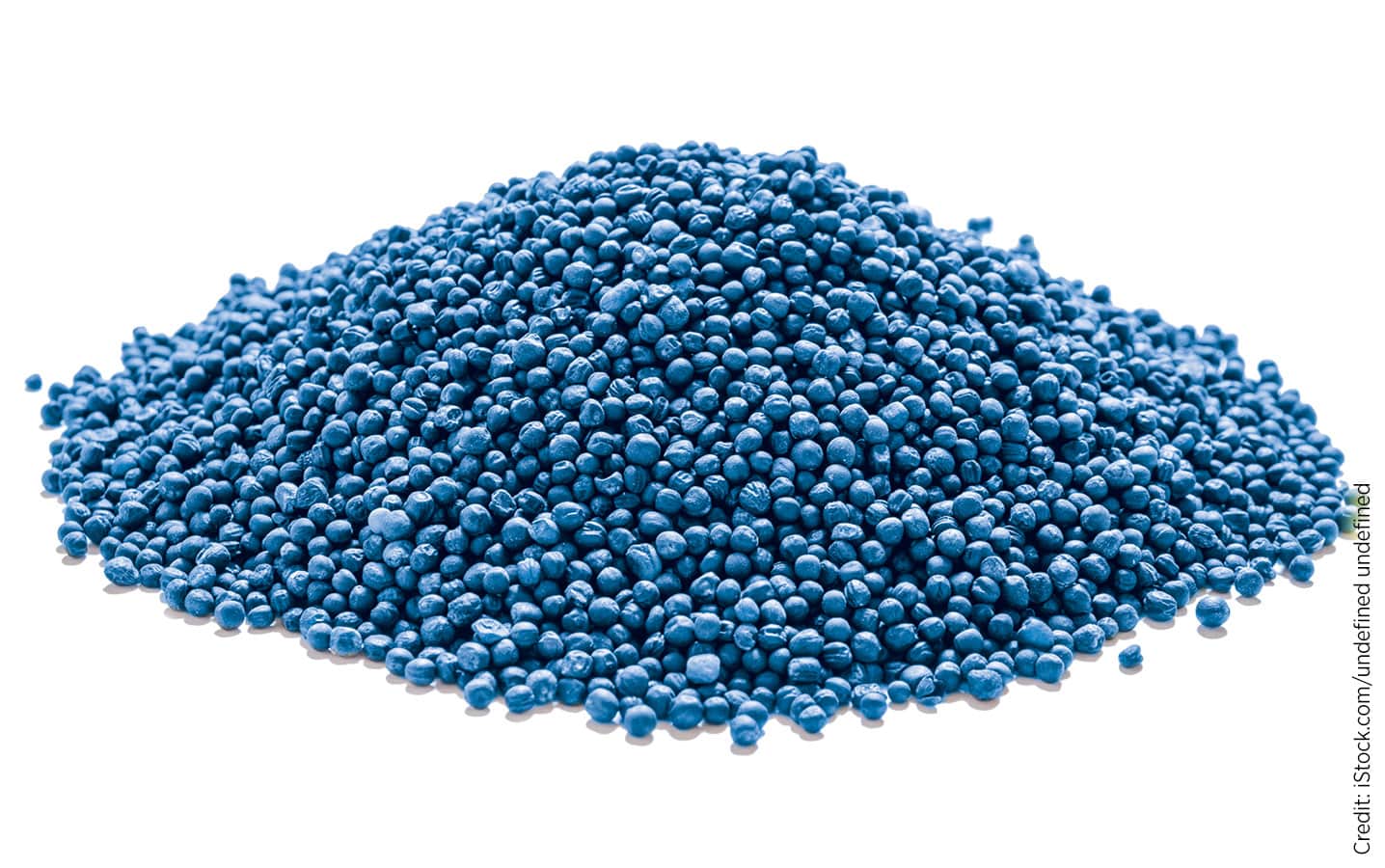New Seed Tech for 2020
New InVigor RATE changes the standard 50-pound bag to an acres-per-bag approach based on four different thousand seed weight (TSW) ranges. BASF made the move so growers can more easily meet the InVigor recommended target plant population of five to seven plants per square foot. This aligns with the Canola Council of Canada‘s target stand recommendation.
“We found that the standard 5 lb./ac. seeding rate was not allowing growers to maximize the performance of InVigor,” says Courtney Stephenson, BASF business development project manager. “Each year there are many different TSWs on the market for each hybrid. For example, there were 20 different TSWs for InVigor L233P in 2018. To decrease complexity, BASF has created four different TSW ranges between 4.0 and 5.9 grams.”
Each bag will seed 10 acres based on its TSW range and the recommended target stand and seeding rate. The seeding rate recommendation is based on 60 per cent survivability, which is the average that BASF and other field surveys have found across Western Canada.
“Targeting a plant population will help growers use resources more efficiently, optimize yield performance, improve lodging resistance, reduce sclerotinia severity, even maturity through a uniform plant structure, and improve weed control,” Stephenson says. “Furthermore, each bag of InVigor will now have a consistent number of seeds and this will make planning when growers go to book seed much easier.” Visit InVigor Rate here for more information.
This table shows the BASF recommended seeding rates based on thousand seed weight (TSW). The company has a new packaging system for InVigor canola seed, going with a seeds per bag and acres per bag approach.
| Bag Range | A | B | C | D | |
|---|---|---|---|---|---|
| Recommended Seeding Rate (lb./ac.) | 4.2 (10 Seeds/FT2) | 4.7 (10 Seeds/FT2) | 5.2 (10 Seeds/FT2) | 5.7 (10 Seeds/FT2) | |
| TSW Range | 4.0-4.4 | 4.5-4.9 | 5.0-5.4 | 5.5-5.9 | |
| Bag Weight | LBS | 42.2 | 47.0 | 51.8 | 56.6 |
| KG | 19.1 | 21.3 | 23.5 | 35.6 | |
| # Of Seeds/Bag | Minimum 4.25 Million Seeds | ||||
TruFlex
TruFlex glyphosate-tolerant canola trait expands the weed label and provides more flexibility in spray rates and timing. The label has 24 more weeds than the Roundup Ready canola label, including foxtail barley, wild buckwheat and dandelion.
With regard to rates and timing, TruFlex canola allows for two applications of 0.67 litres per acre (L/ac.) of glyphosate from cotyledon to first flower or one application of 1.33 L/ac. of glyphosate from emergence to six-leaf stage. “First flower” is when no more than 50 per cent of the canola plants have one flower open. This varies from Roundup Ready canola, which allowed for two applications of 0.33 L/ac. or one application of 0.5 L/ac. of Roundup from cotyledon to six-leaf. In a year like 2019, when many canola fields had varying stages of maturity, TruFlex would give them the option to spray later and at higher rates.
Who should grow a clubroot-resistant variety? The Canadian recommendation is for farmers to grow clubroot-resistant (CR) varieties as part of a holistic clubroot farm management plan. Read more in the Saskatchewan Bulletin.
Stacked LL and RR
The Liberty Link trait is now available for use in other seed programs. For example, Pioneer offers P501L, a clubroot-resistant hybrid with the glufosinate tolerance of Liberty Link. With this approval, seed companies can also now offer stacked Liberty Link and Roundup Ready herbicide-tolerant (HT) traits in the same hybrid.
What is the benefit of this? The stack means that growers can apply at least two “effective” modes of action on the same field. One recommendation to prevent herbicide-resistant weeds is to spray weeds with at least two ‘effective’ herbicide groups. A herbicide is not “effective” if some weeds in the field are already resistant to it. Glyphosate and glufosinate, the actives in Roundup and Liberty, are both effective on most weeds in Western Canada (the only current exception is glyphosate-resistant kochia). Note that tank mixes of glyphosate and glufosinate are not recommended due to the weed antagonism that occurs, so they have to be applied in separate passes.
Ian Epp, the Canola Council of Canada agronomy specialist with the weed management portfolio, says stacked HT can be particularly effective on wild oats. Many wild oat populations are resistant to multiple groups, so the stack provides a rare opportunity to hit wild oats in-crop with two effective herbicide groups.
“The LL-RR stack is best used in longer canola rotations,” Epp adds, “because volunteers can be a problem.” As a way to manage stacked canola volunteers, growers will want to use a tank mix for pre-seed burnoff (which is recommended anyway) and target volunteer canola in other crops (which is also recommended).
DeKalb and BASF product line ups for 2020 will include at least one stacked hybrid each.
Power combinations
Results from the 2019 Canola Performance Trials will be posted online once they start rolling in after harvest. The interactive site also has results from 2018 and earlier if you want to take a look now.
Growers who want clubroot resistance, pod-shatter tolerance and enhanced HT in the same hybrids will have more choice for 2020. For example, DeKalb offers DKTFLL 21 SC with the TruFlex/Liberty Link stack plus improved pod-shatter tolerance, and DKTF 98 CR with TruFlex and multi-genetic clubroot resistance. BASF has an ‘InVigor Choice’ hybrid LR344PC with the Liberty Link and TruFlex stack as well as the pod-shatter reduction trait and clubroot resistance. Canterra’s CS2600 CR-T has TruFlex, clubroot-resistance and straight-cut traits.
Notable specialty-oil varieties include Corteva’s Brevant B3010M with a new source of clubroot resistance and the new HarvestMax trait, and Cargill’s Victory V25-1T, which has TruFlex, clubroot resistance and blackleg resistance based on a combination of major and minor genes. Cargill now offers specialty-oil hybrids from four different herbicide-tolerant systems: TruFlex Roundup Ready, Genuity Roundup Ready, Clearfield and Liberty Link.





